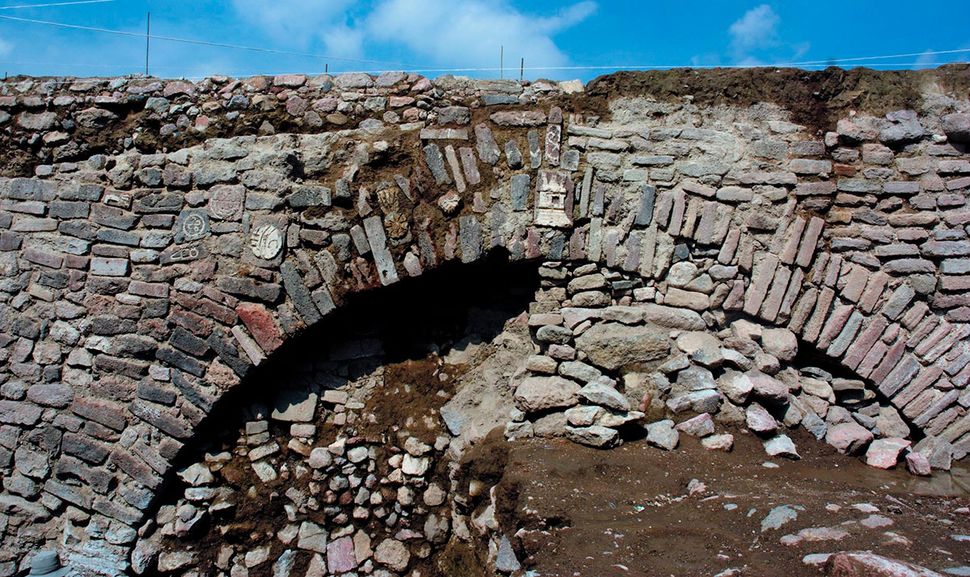Anthropology
Related: About this forumArchaeologists Uncover 17th-Century Mexican Tunnel Decorated With Mysterious Aztec Carvings

Archaeologists in Mexico have unearthed an intriguing tunnel that dates back to the 17th century adorned with 11 drawings. It is thought the images were created before the Spanish conquistadors arrived, but were incorporated into the walls of the tunnel when it was built centuries later. That means they were likely created by the Aztecs, an empire famed for their beautiful temples, hieroglyphic writing system, and gruesome penchant for sacrificing children.
Long ago in the 15th century, the Aztec emperor Moctezuma I ordered the construction of a dike system in what is now Mexico City in an attempt to control severe flooding from nearby lakes. However, when infamous conquistador Hernán Cortés and his posse arrived, the system was destroyed, before being rebuilt in the 17th century. The dike system is now known as the Albarradon de Ecatepec.
The stone used in the initial construction was likely repurposed when the dikes were rebuilt, explaining the Aztec symbols etched into the sides of the tunnel. It is believed they were drawn by locals from the nearby towns of Chiconautla and Ecatepec prior to Spanish invasion. The images include both petroglyphs (rock carvings) and stucco relief panels and depict various things, including a war shield or chimalli, the head of a bird of prey, and a flint point. Some icons are still being carefully examined to assess what they might portray, notes INAH, Mexico’s National Institute of Anthropology and History.

The head of a bird of prey drawn on the rock. Edith Camacho, INAH
The main arch of the tunnel also includes an etching of a temple dedicated to Tlaloc, the Aztec god of rain, earthly fertility, and water. He was viewed by the Aztecs as a provider of life and sustenance. Hidden within the 8-meter (27-foot) tunnel also lay various artifacts made from glass, porcelain, and a type of pottery called majolica, along with a statue of a seated person that appears to be missing its head and the lone feet of a larger statue.
More:
https://www.iflscience.com/editors-blog/archaeologists-uncover-17thcentury-mexican-tunnel-decorated-with-mysterious-aztec-carvings/
Judi Lynn
(160,434 posts)By Yasemin Saplakoglu - Staff Writer 13 hours ago History
The tunnel was decorated in "petroglyphs" and stucco reliefs.

The east end of the tunnel, where the water exited, was decorated in petroglyphs and stucco reliefs.
(Image: © Edith Camacho INAH)
Archaeologists have uncovered a 17th-century tunnel filled with indigenous rock carvings in the city of Ecatepec in Mexico. The tunnel likely served as part of a floodgate for a dike — through which water entered on one side and exited on the other — that was created to control the constant flooding that ravaged the lands.
The carvings decorating the east end of the 27.6-foot-long (8.4 meters) tunnel include 11 pre-Hispanic images — or those that date back to the Native Americans that lived in the area before 1521 when it was conquered by the Spanish — in the form of etchings into the rock called "petroglyphs" and stucco reliefs. The reliefs were created by sculpting an image and then painting it with limestone, said Raúl García Chávez, coordinator of the salvage and enhancement project for the dike.
The carvings include a "chimalli" or war shield, a flint point and the head of a bird of prey, while the stucco reliefs resemble raindrops.
The raindrop symbols were found on the upper part of the keystone — the top stone that holds the arch together — also on the east end of the tunnel where the water exited; these symbols could represent a link with Tlaloc, the Aztec god of rain, Chávez told Live Science. The lower part of the keystone is engraved with an image of a temple. On the west side, where the water once entered the tunnel, the researchers found one more petroglyph which they are currently studying. They also found four iron nails and two 21-foot-long (6.5 m) wooden beams.
More:
https://www.livescience.com/17th-century-tunnel-discovered-mexico.html?utm_source=notification